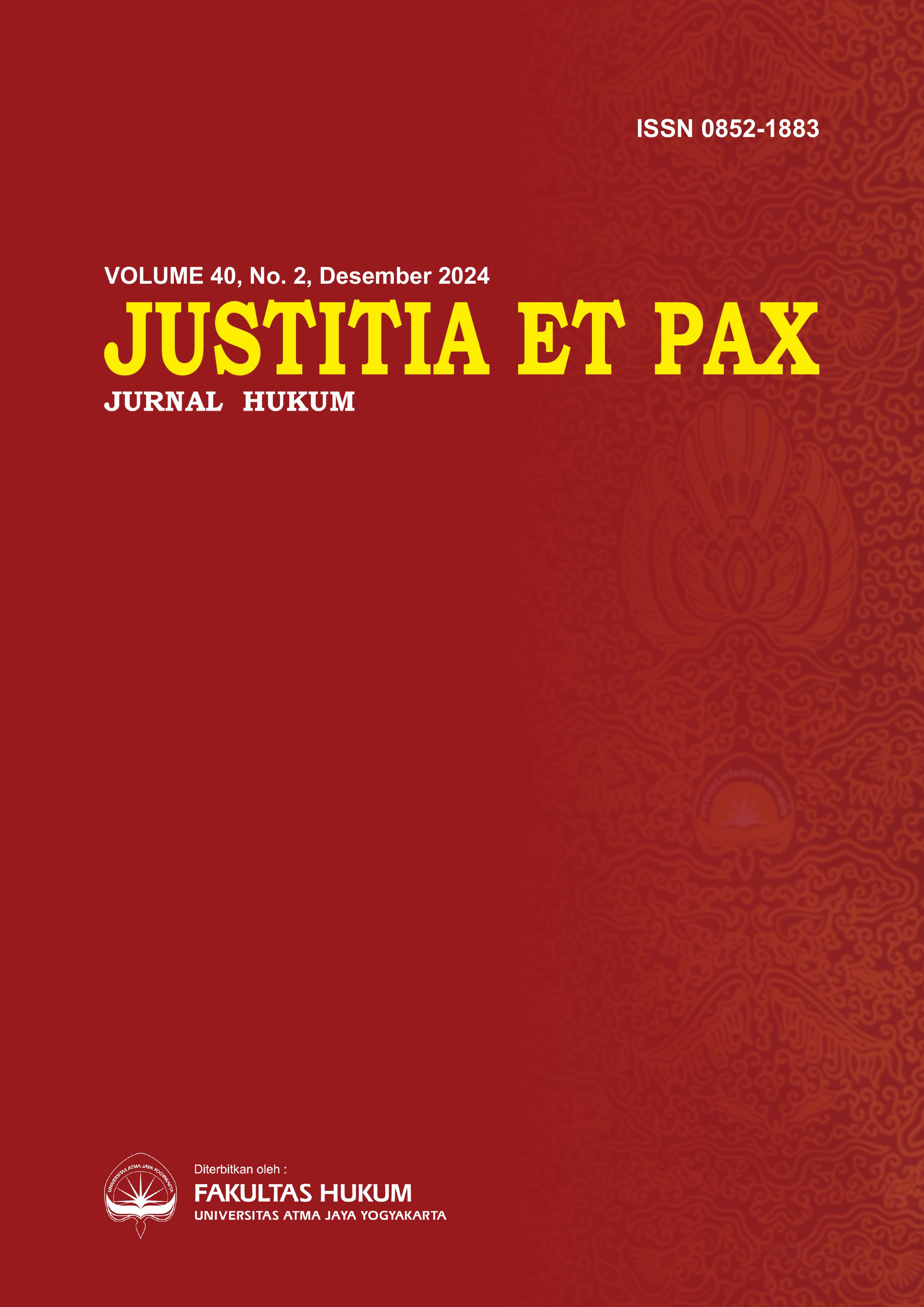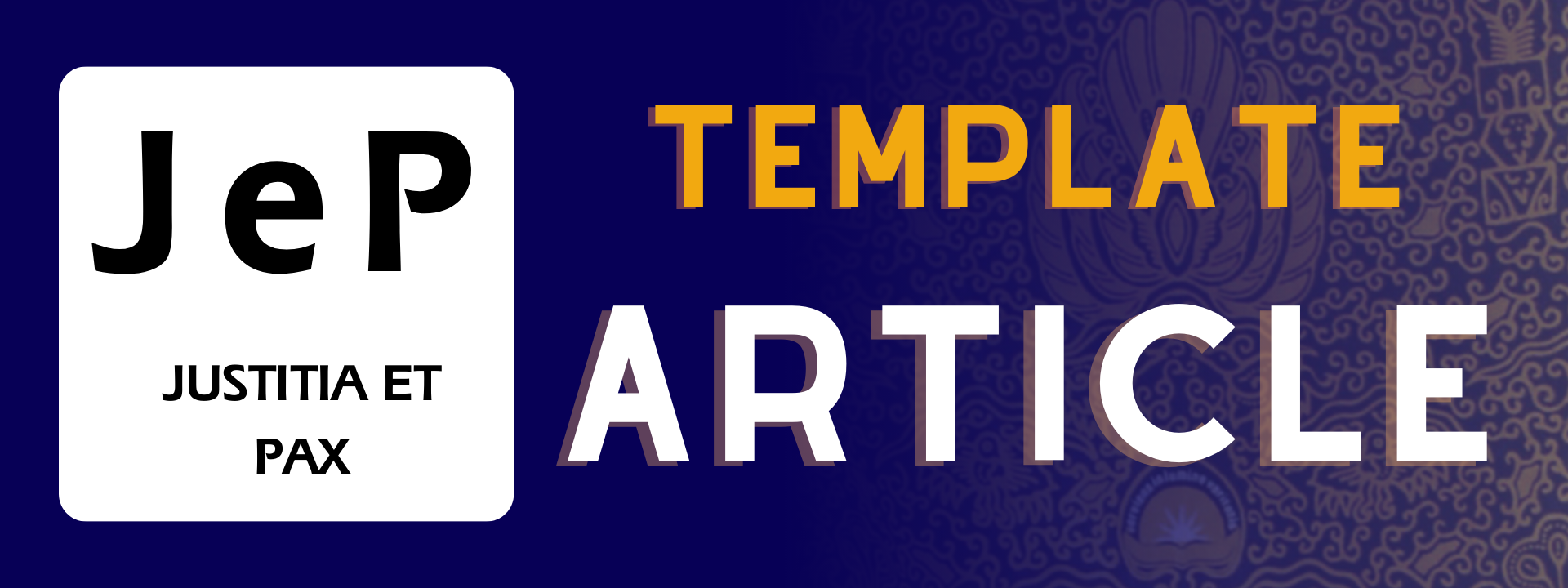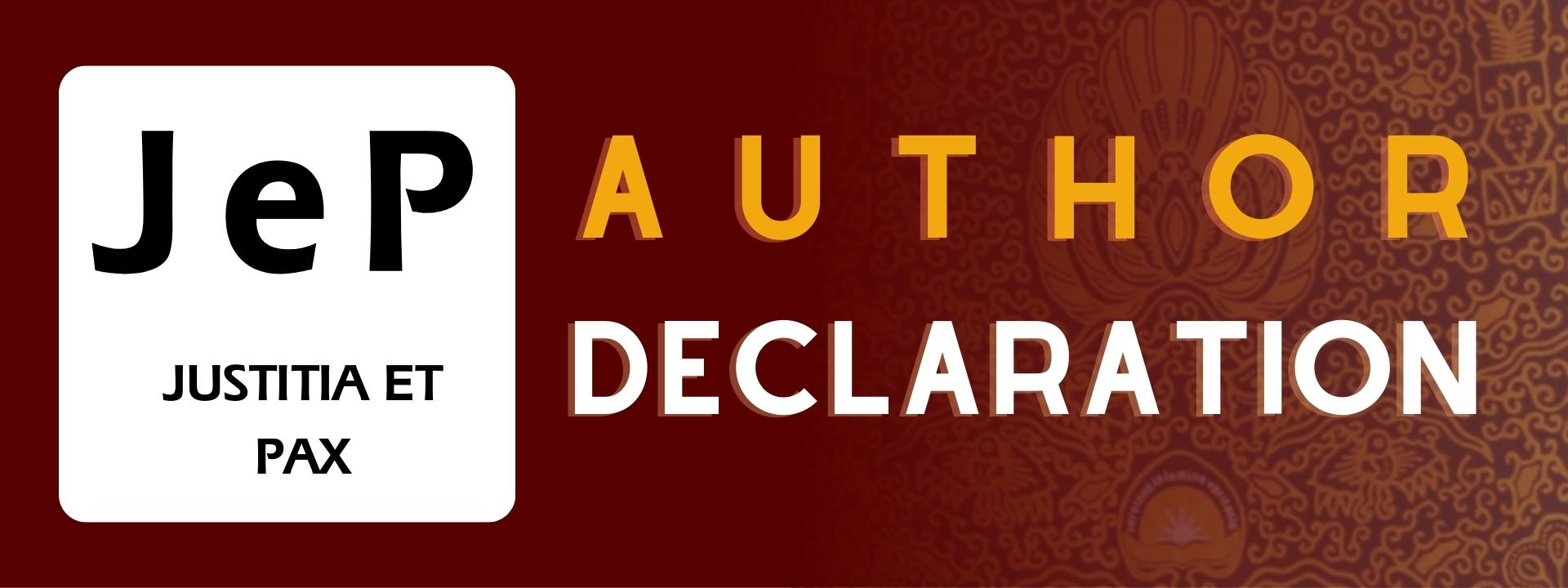PENEGAKAN HUKUM TERHADAP PENGGUNAAN SEMPADAN PANTAI WURING DAN DAMPAKNYA BAGI LINGKUNGAN HIDUP DI KABUPATEN SIKKA
DOI:
https://doi.org/10.24002/jep.v40i2.8267Keywords:
Coastal Boundary, Environment, Law Enforcement, Wuring VillageAbstract
The coastal strip is one of the elements regulated in the regulation of spatial planning. The coastal strip is also a protected area of local protection type. However, there are still many people who do not pay attention and comply with the status of the coastal boundary area and the regulations governing the coastal boundary. One of them is done by the people of Kampung Wuring because they have used the coastal boundary for settlements. Therefore, this research discusses how the regulation of the coastal boundary in the Regional Regulation of the RTRW of Sikka Regency, how law enforcement against the use of the Wuring coastal boundary in Sikka Regency, and what environmental impacts are caused by the use of the Wuring coastal boundary in Sikka Regency. This research is a type of empirical legal research with qualitative data analysis method. The conclusion of this research is that Wuring Village is one of the locations designated as a coastal border area of Sikka Regency based on the Regional Regulation of Sikka Regency RTRW. However, in its implementation, the use of the Wuring coastal boundary is more focussed on residential activities. The Wuring coastal boundary follows the national legal regulation of 100 metres from the highest tide point inland. The area has been filled with houses, and the houses even protrude further into the sea. It is also known that the law enforcement implemented by the local government on the use of the Wuring coastal boundary is in the form of building restrictions. The use of the Wuring coastal boundary also causes impacts on the environment consisting of robb flooding, abrasion, pollution due to waste, pollution due to garbage, mangroves are decreasing, and coral reefs are damaged.
References
Buku
Amiruddin dan Zainal, A, 2020, Pengantar Metode Penelitian Hukum, Rajagrafindo Persada, Jakarta.
Azizy, Q, 2005, Menggagas Hukum Progresif Indonesia, Pustaka Belajar, Yogyakarta.
Irwansyah, dan Ahsan, Y, 2021, Penelitian Hukum Pilihan Metode & Praktik Penulisan Artikel (Edisi Revisi), Mirra Buana Media, Yogyakarta.
Siahaan, N. H. T, 2004, Hukum Lingkungan dan Ekologi Pembangunan, Penerbit Erlangga, Jakarta.
Solikin, N, 2019, Hukum, Masyarakat dan Penegakan Hukum, Qiara Media, Pasuruan.
Jurnal
Akmal, D, U, “Politik Reformasi Hukum: Pembentukan Sistem Hukum Nasional yang Diharapkan”, Jurnal Hukum dan Keadilan, Vol. 8, No. 1, 2021.
Gobang, A, A, K, S., Antariksa., Agung, M, N, “Perkembangan Spasial Hunian Suku Bajo Di Kampung Wuring Kota Maumere”, Jurnal Teknik Arsitektur, Vol. 2, No. 1, 2017.
Hasibuan, G, P., Yar, J., Bieng, B, “Kajian Kedudukan Garis Pantai untuk Penetapan Sempadan Pantai Kota Bengkulu”, NATURALIS, Jurnal Penelitian Pengelolaan Sumberdaya Alam dan Lingkungan, Vol. 9, No. 2, 2020.
Hutomo, P., Markus, M, S, “Perspektif Teori Sistem Hukum dalam Pembaharuan Pengaturan Sistem Kemasyarakatan Mileter”, Legacy: Jurnal Hukum dan Perundang-Undangan, Vol. 1, No. 1, 2021.
Jazuli, A, “Penegakan Hukum Penataan Ruang Dalam Rangka Mewujudkan Pembangunan Berkelanjutan”, Jurnal Rechtsvinding, Vol. 6, No. 2, 2017.
Latipulhayat, A, “Khazanah Roscoe Pound”, Padjadjaran Jurnal Ilmu Hukum, Vol. 1, No. 2, 2014.
Moho, H, “Penegakan Hukum di Indonesia Menurut Aspek Kepastian Hukum, Keadilan dan Kemanfaatan”, Jurnal Warta, Vol. 13, No. 1, 2019.
Nuryadi, D, “Teori Hukum Progresif dan Penerapannya Di Indonesia”, Jurnal Ilmiah Hukum De Jure, Vol. 1, No. 2, September 2014.
Pahlevi, F, S, “Pemberantasan Korupsi di Indonesia: Perspektif Legal System Lawrence Friedman.”, Jurnal El Dusturie, Vol. 1, No. 1, 2022.
Prastiti, H, S, “Menakar Efektivitas Pendekatan Penaatan (Compliance Approach) Dan Pendekatan Penjeraan (Deterrence Approach) dalam Penegakan Hukum Lingkungan”, Tanjungpura Law Journal, Vol. 6, No. 1, 2022.
Pradnyani, N, L, I., I, K, S, “Implementasi Hukum atas Pelanggaran dalam Penggunaan Sempadan Pantai untuk Usaha Pribadi di Wilayah Pemerintahan Provinsi Bali”, Jurnal Hukum Kertha Desa, Vol. 10, No. 6, 2022.
Pratiwi, N., Dwi, B, S., Khusnul, A, “Analisis Implementasi Pembangunan Berkelanjutan di Jawa Timur”, JIEP, Vol. 18, No. 1, 2018.
Sari, A. M., Andy, F. W., Abdul, W., “Penerapan Konsep Green Economy dalam Pengembangan Desa Wisata Sebagai Upaya Mewujudkan Pembangunan Berwawasan Lingkungan (Studi pada Dusun Kungkuk, Desa Punten Kota Batu)”, Jurnal Administrasi Publik (JAP), Vol. 2, No. 4, 2014.
Sinaga, E, J, “Penataan Ruang dan Peran Masyarakat dalam Pembangunan Wilayah”, Jurnal Pandecta, Vol. 15, No. 2, 2020.
Peraturan Perundang-Undangan
Peraturan Daerah Kabupaten Sikka Nomor 2 Tahun 2012 tentang Rencana Tata Ruang Wilayah Kabupaten Sikka Tahun 2012-2032 (Lembaran Daerah Kabupaten Sikka Tahun 2012 Nomor 2).
Peraturan Pemerintah Nomor 21 Tahun 2021 tentang Penyelenggaraan Penataan Ruang (Lembaran Negara Republik Indonesia Tahun 2021 Nomor 31).
Peraturan Presiden Nomor 51 Tahun 2016 tentang Batas Sempadan Pantai (Lembaran Negara Republik Indonesia Tahun 2016 Nomor 113).
Undang-Undang Nomor 1 Tahun 2014 tentang Perubahan atas Undang-Undang Nomor 27 Tahun 2007 tentang Pengelolaan Wilayah Pesisir dan Pulau-Pulau Kecil (Lembaran Negara Republik Indonesia Tahun 2014 Nomor 2).
Undang-Undang Nomor 26 Tahun 2007 tentang Penataan Ruang (Lembaran Negara Republik Indonesia Tahun 2007 Nomor 68).
Undang-Undang Nomor 27 Tahun 2007 tentang Pengelolaan Wilayah Pesisir dan Pulau-Pulau Kecil (Lembaran Negara Republik Indonesia Tahun 2007 Nomor 84).
Undang-Undang Nomor 32 Tahun 2009 tentang Perlindungan dan Pengelolaan Lingkungan Hidup (Lembaran Negara Republik Indonesia Tahun 2009 Nomor 140).
Downloads
Published
Issue
Section
License

This work is licensed under a Creative Commons Attribution-NonCommercial-ShareAlike 4.0 International License.
Authors who publish with this journal agree to the following terms:
- Authors retain copyright and grant the journal right of first publication with the work simultaneously licensed under a Creative Commons Attribution License that allows others to share the work with an acknowledgement of the work's authorship and initial publication in this journal.
- Authors are able to enter into separate, additional contractual arrangements for the non-exclusive distribution of the journal's published version of the work (e.g., post it to an institutional repository or publish it in a book), with an acknowledgement of its initial publication in this journal.
- Authors are permitted and encouraged to post their work online (e.g., in institutional repositories or on their website) prior to and during the submission process, as it can lead to productive exchanges, as well as earlier and greater citation of published work (See The Effect of Open Access).

This work is licensed under a Creative Commons Attribution-NonCommercial-ShareAlike 4.0 International License.




















